Showing Spotlights 625 - 632 of 2784 in category All (newest first):
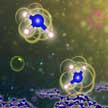 The ability to produce ammonia efficiently from air and water at room temperature and ambient pressure is of great interest in agriculture where it is used in fertilizers. In particular, the electrochemical reduction of nitrogen, in which the conversion of nitrogen to ammonia takes place under mild conditions, is highly relevant for the chemical industry that needs to cope with increasing demands for ammonia and at the same time is under pressure to reduce its ecological footprint. A new study describes novel single-atom catalysts as fascinating electrocatalysts for the application in nirtogen reduction.
The ability to produce ammonia efficiently from air and water at room temperature and ambient pressure is of great interest in agriculture where it is used in fertilizers. In particular, the electrochemical reduction of nitrogen, in which the conversion of nitrogen to ammonia takes place under mild conditions, is highly relevant for the chemical industry that needs to cope with increasing demands for ammonia and at the same time is under pressure to reduce its ecological footprint. A new study describes novel single-atom catalysts as fascinating electrocatalysts for the application in nirtogen reduction.
Nov 5th, 2018
 Researchers investigated the thermal conductivity and thermal diffusivity of epoxy composites with high loading fractions of graphene and h-BN fillers. They found that the graphene fillers outperformed boron nitride fillers in terms of thermal conductivity enhancement. The surprising finding is that, in the high loading composites with quasi-2D fillers, the apparent cross-plane thermal conductivity of the fillers can be the limiting factor for heat conduction. These results are important for developing the next generation of the thermal interface materials.
Researchers investigated the thermal conductivity and thermal diffusivity of epoxy composites with high loading fractions of graphene and h-BN fillers. They found that the graphene fillers outperformed boron nitride fillers in terms of thermal conductivity enhancement. The surprising finding is that, in the high loading composites with quasi-2D fillers, the apparent cross-plane thermal conductivity of the fillers can be the limiting factor for heat conduction. These results are important for developing the next generation of the thermal interface materials.
Oct 30th, 2018
 Researchers investigated the potentially protective role of nanoceria against oxidative stress associated with microgravity and cosmic radiations in space. Their findings support the application of antioxidant nanomaterials to skeletal muscle tissue culture for protection from the noxious effects of microgravity and cosmic radiations, which result in muscle mass and force loss and limit human operations and permanence in space. On Earth, these deteriorations are usually associated with aging or pathologies and are exhibited over longer time intervals compared to those occurring in space.
Researchers investigated the potentially protective role of nanoceria against oxidative stress associated with microgravity and cosmic radiations in space. Their findings support the application of antioxidant nanomaterials to skeletal muscle tissue culture for protection from the noxious effects of microgravity and cosmic radiations, which result in muscle mass and force loss and limit human operations and permanence in space. On Earth, these deteriorations are usually associated with aging or pathologies and are exhibited over longer time intervals compared to those occurring in space.
Oct 29th, 2018
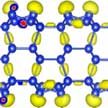 In the past few years, monolayer and multilayer silicenes have been successfully grown on various metal substrates. Unfortunately, silicene on metal substrate generally exhibits metallic or semi-metallic character without a bandgap, and thus cannot be used as adsorption layer of photovoltaic materials. A new comprehensive investigation of multilayer silicene by means of ab initio swarm-intelligence structure-searching method predicts that tri-layer silicene is an ideal candidate for high-efficiency photovoltaic absorbers.
In the past few years, monolayer and multilayer silicenes have been successfully grown on various metal substrates. Unfortunately, silicene on metal substrate generally exhibits metallic or semi-metallic character without a bandgap, and thus cannot be used as adsorption layer of photovoltaic materials. A new comprehensive investigation of multilayer silicene by means of ab initio swarm-intelligence structure-searching method predicts that tri-layer silicene is an ideal candidate for high-efficiency photovoltaic absorbers.
Oct 15th, 2018
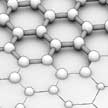 A new study on worldwide graphene production shows unequivocally that the quality of the graphene produced in the world today is rather poor, not optimal for most applications, and most companies are producing graphite microplatelets. This is possibly the main reason for the slow development of graphene applications, which usually require a customized solution in terms of graphene properties. A conclusion that sounds even more damming is that this extensive study of graphene production worldwide indicates that there is almost no high quality graphene, as defined by ISO, in the market yet.
A new study on worldwide graphene production shows unequivocally that the quality of the graphene produced in the world today is rather poor, not optimal for most applications, and most companies are producing graphite microplatelets. This is possibly the main reason for the slow development of graphene applications, which usually require a customized solution in terms of graphene properties. A conclusion that sounds even more damming is that this extensive study of graphene production worldwide indicates that there is almost no high quality graphene, as defined by ISO, in the market yet.
Oct 9th, 2018
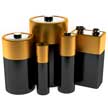 For the most part, advances in energy storage will rely on the continuing development of materials science, pushing the limits of performance of existing battery materials and developing entirely new battery structures and compositions. The battery industry is already working to reduce the cost of lithium-ion batteries, including by removing expensive cobalt from their positive electrodes. Researchers also are looking at the possibilities of using two-dimensional materials, essentially extremely thin sheets of substances with useful electronic properties.
For the most part, advances in energy storage will rely on the continuing development of materials science, pushing the limits of performance of existing battery materials and developing entirely new battery structures and compositions. The battery industry is already working to reduce the cost of lithium-ion batteries, including by removing expensive cobalt from their positive electrodes. Researchers also are looking at the possibilities of using two-dimensional materials, essentially extremely thin sheets of substances with useful electronic properties.
Oct 4th, 2018
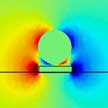 Researchers have developed a new type of optical manipulation method to achieve versatile manipulation of objects with different sizes and types using optical heating. In this new technique, nanoparticles get trapped at temperature hot spots instead of electrical hot spots, which demonstrates a different working mechanism and approach from the traditional optical manipulation techniques. Due to this unique working principle, stable trapping of large metallic nanoparticles and miniscule quantum dots on single nanoantennas with extremely low optical power is achieved.
Researchers have developed a new type of optical manipulation method to achieve versatile manipulation of objects with different sizes and types using optical heating. In this new technique, nanoparticles get trapped at temperature hot spots instead of electrical hot spots, which demonstrates a different working mechanism and approach from the traditional optical manipulation techniques. Due to this unique working principle, stable trapping of large metallic nanoparticles and miniscule quantum dots on single nanoantennas with extremely low optical power is achieved.
Oct 3rd, 2018
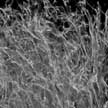 Investigating the potential of DNA to form self-assembled injectable hydrogels via physical crosslinking with silicate nanodisks, researchers have utilized DNA as a high molecular weight polymeric chain in order to form hydrogel networks for tissue regeneration and drug delivery applications. They have designed shear thinning hydrogels, which can be passed through a 22-gauge syringe by taking advantage of the native chemical structure of DNA and its specific base pairing interactions.
Investigating the potential of DNA to form self-assembled injectable hydrogels via physical crosslinking with silicate nanodisks, researchers have utilized DNA as a high molecular weight polymeric chain in order to form hydrogel networks for tissue regeneration and drug delivery applications. They have designed shear thinning hydrogels, which can be passed through a 22-gauge syringe by taking advantage of the native chemical structure of DNA and its specific base pairing interactions.
Sep 24th, 2018
 The ability to produce ammonia efficiently from air and water at room temperature and ambient pressure is of great interest in agriculture where it is used in fertilizers. In particular, the electrochemical reduction of nitrogen, in which the conversion of nitrogen to ammonia takes place under mild conditions, is highly relevant for the chemical industry that needs to cope with increasing demands for ammonia and at the same time is under pressure to reduce its ecological footprint. A new study describes novel single-atom catalysts as fascinating electrocatalysts for the application in nirtogen reduction.
The ability to produce ammonia efficiently from air and water at room temperature and ambient pressure is of great interest in agriculture where it is used in fertilizers. In particular, the electrochemical reduction of nitrogen, in which the conversion of nitrogen to ammonia takes place under mild conditions, is highly relevant for the chemical industry that needs to cope with increasing demands for ammonia and at the same time is under pressure to reduce its ecological footprint. A new study describes novel single-atom catalysts as fascinating electrocatalysts for the application in nirtogen reduction.
 Subscribe to our Nanotechnology Spotlight feed
Subscribe to our Nanotechnology Spotlight feed





